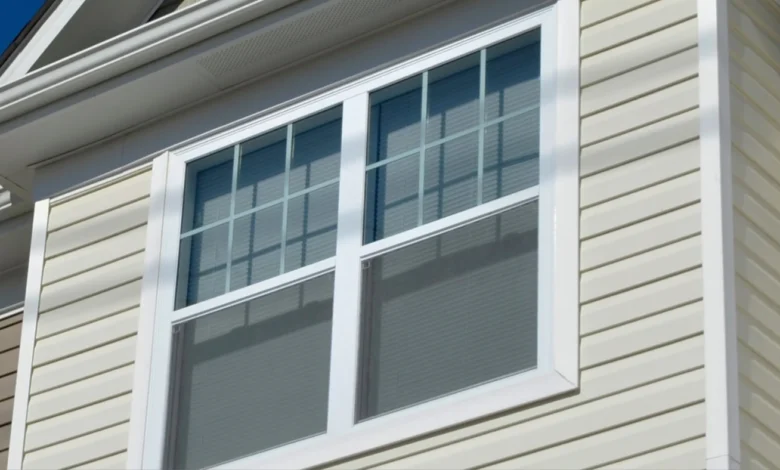Understanding the Science Behind Impact Window Installation

Impact windows are increasingly viewed as a must-have for modern homes, especially in areas prone to hurricanes, heavy storms, and strong wind events. But what truly sets these windows apart isn’t just their look or durability—it’s the engineering that goes into their design and the precision required during installation.
Behind every secure, energy-efficient, and quiet home protected by impact windows is a well-orchestrated process grounded in material science, building dynamics, and exact execution. If you’ve ever wondered what really makes an impact window different—or why installation isn’t just plug-and-play—this deep dive is for you.
Layered Defense: The Anatomy of an Impact Window
To appreciate the complexity of impact window installation, it’s essential to understand what these windows are made of. Traditional single-pane windows use one sheet of glass and minimal framing. By contrast, impact windows are built for resilience through layered construction:
- Laminated Glass: This is the centerpiece. Typically, two sheets of tempered glass are bonded together with a clear polyvinyl butyral (PVB) or SentryGlas interlayer. This bonding prevents the glass from breaking into dangerous shards, holding the window in place even when cracked.
- Tempered Glass: Each glass layer is heat-treated to increase strength and resist shattering. Tempered glass is four to five times stronger than standard glass, a key element in resisting force.
- Heavy-Duty Framing: The frames—often made of aluminum, vinyl, or reinforced composite—are designed to anchor the laminated glass securely. These frames are thicker and more structurally sound than standard window frames.
- Sealants and Spacers: High-performance sealants help protect against moisture infiltration, while insulated spacers separate double-pane configurations, contributing to thermal control.
Each part of the window has a function. When combined, they form a product capable of withstanding Category 5 hurricane conditions.
Installation is Engineering, Not Assembly
Choosing the right window is only half the equation. Proper impact window installation is a detailed process that determines whether the window will truly perform under pressure—or fail.
Here’s why the process requires precision at every stage:
1. Structural Opening Evaluation
Installers begin by measuring the existing window opening and inspecting the surrounding wall for damage or inconsistencies. Any signs of frame warping, water damage, or unlevel surfaces must be addressed before installation can proceed.
The goal is to ensure a perfectly flush and stable mount, which is critical for withstanding wind pressure.
2. Secure Anchoring and Fastening
Impact windows are only as strong as their anchoring system. Specialized fasteners are used to secure the frames into concrete, block, or reinforced studs, depending on the wall type.
Installers often use tapcons or anchor bolts placed in a pattern that meets or exceeds local building code standards. If anchoring fails, the window may become a weak point in the home’s envelope—regardless of the quality of the glass.
3. Seamless Sealing
After anchoring, polyurethane or silicone sealant is applied between the window frame and wall to ensure an airtight, watertight bond. This step prevents rain, wind, and noise intrusion and also keeps moisture from degrading the structure around the window.
Skipping or rushing this stage undermines the very benefit of having impact windows in the first place.
4. Pressure Testing and Code Compliance
In many municipalities, windows must pass pressure testing post-installation to confirm wind-load resistance. Installers may be required to document frame type, fastener size, spacing, and sealant type for inspection.
Professional contractors, such as National Glass & Construction, are well-versed in local code requirements and understand the documentation process needed to ensure compliance and pass city inspection.
Air, Water, and Energy Efficiency
One of the unsung advantages of impact windows is their performance in energy conservation and indoor comfort. When installed correctly, they:
- Reduce air infiltration, keeping cooled or heated air inside
- Prevent water penetration, protecting walls and interiors
- Lower solar heat gain, reducing the load on HVAC systems
It’s a combination of proper framing, balanced pressure, and tight sealing that turns an impact window into an energy-efficient asset. That’s why installation isn’t something to leave to general handymen or first-time contractors.
Common Installation Mistakes to Avoid
Even high-end windows can underperform if installation is subpar. Here are common missteps to avoid:
- Improper fastener spacing: Leads to movement under pressure
- Use of wrong sealants: Can break down over time or fail to bond
- Skipping flashing or waterproof membranes: Causes leaks and structural damage
- Misalignment of sashes: Results in difficulty opening or closing windows
These issues can lead to noise intrusion, air leakage, or even structural vulnerabilities during storms.
Why Timing and Environment Matter
Environmental factors during installation can impact long-term performance. For example, applying sealant in high humidity or rain can compromise bonding. Temperatures that are too low or too high may affect how adhesives set.
Professionals monitor these conditions and schedule installations accordingly. It’s part of a broader understanding that this work goes beyond “window replacement”—it’s structural reinforcement.
The Bigger Picture: Integrating Doors and Windows
While this article focuses on windows, it’s worth mentioning that impact door installation follows many of the same principles—anchoring, sealing, code compliance—but with added considerations for hinges, locks, and door clearance.
Together, impact doors and windows form a continuous envelope of protection. A system-wide approach ensures that pressure changes during storms don’t exploit a single weak point.
Maintenance Post-Installation
Once your windows are installed, minimal maintenance is needed, but a few habits will preserve performance:
- Clean frames and tracks periodically to remove buildup
- Inspect seals annually for cracks or separation
- Test window operation to ensure smooth functionality
- Report any visible frame shifting or condensation immediately
Properly installed impact windows can last 20–30 years with routine care—making them one of the most valuable long-term upgrades for any coastal or wind-prone home.
Final Thoughts
Behind every reliable impact window is a precise installation process grounded in engineering and experience. This isn’t just about putting glass into a frame—it’s about anchoring, sealing, balancing, and integrating a protective system into the very structure of your home.
For homeowners seeking peace of mind, energy efficiency, and lasting value, understanding the science behind impact window installation is the first step. And working with professionals like National Glass & Construction ensures that science becomes structure—reliable, compliant, and built to last.



